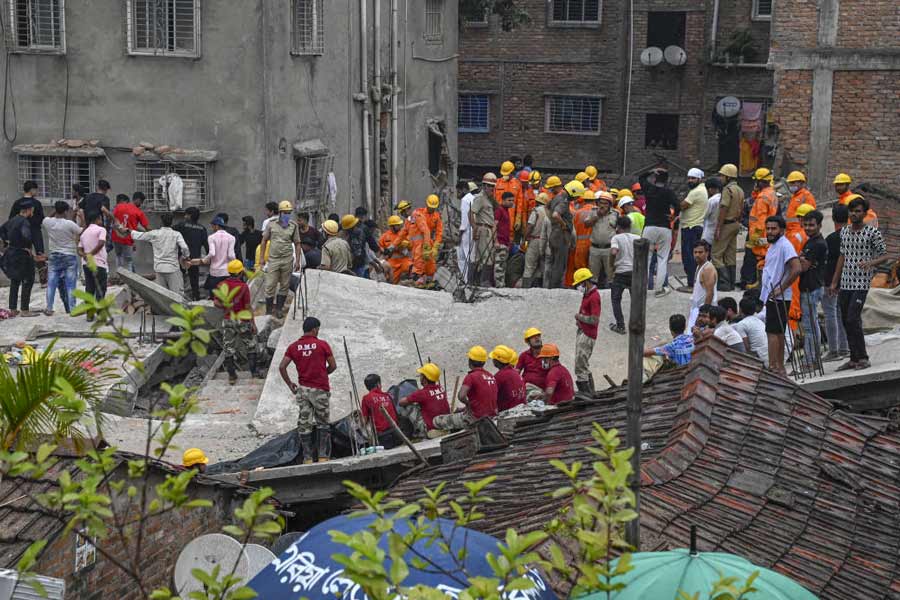The Kolkata Municipal Corporation (KMC) on Tuesday started demolishing a building in Garden Reach that has tilted and is standing next to the site where an allegedly illegal five-storey structure collapsed on March 17, killing 12 people.
Jadavpur University’s civil engineering department sent a team to collect concrete and steel reinforcement samples from the collapsed building on Tuesday.
A team formed by the KMC to find out the reasons for the collapse also visited the site on Tuesday. The team has sought JU’s help to ascertain whether inferior materials were used to construct the building that collapsed.
“We visited the site of the building collapse on Tuesday. A team from Jadavpur University also collected samples,” said Jyotirmoy Tanti, joint commissioner of the KMC and chairperson of the probe committee.
The probe team included senior officials of the KMC and the deputy commissioner of police, port division. They were accompanied by three external experts — a structural engineer, a soil engineer and an architect — during the visit.
A KMC official said the JU team would come back later to collect soil samples, which they could not collect on Tuesday as rubble of the collapsed building is still spread over the site.
“We have started pulling down a building located next to the plot where the collapsed structure stood. This building is tilted and was constructed without any permit from the KMC,” said the official.
Civic engineers decided to pull down the building because they suspect there could be issues with its structural stability.
This is the first building that the KMC has started demolishing since the collapse of the under-construction building in Garden Reach’s Azhar Molla Bagan.
The civic body has served notices on the owners and occupants of several other buildings in Azhar Molla Bagan that have been built without any permission from the KMC.
Engineers and officials of the civic body had on Sunday tried to start the demolition of the tilted structure but had to drop the plan following protests by those who stayed in the building till it was evacuated following the collapse on March 17.
The protesters had demanded that the government build new homes for them if the building was to be pulled down.
“The names of all those who lived in the building and the areas of their dwelling units have been noted. The political leadership will deal with the residents on their demand. We did not face protests on Tuesday and went ahead with the demolition,” said a KMC official.
The demolition began around 11am on Tuesday. A KMC official said the casting of each floor, barring the ground floor, had been demolished by the evening. The walls will be razed next.
“We will first demolish the walls of the top floor and then come down one floor after another,” the official said.
“The demolition and removal of the rubble of the collapsed building will take nearly a month. The work has to be done with caution. We cannot rush,” an official said.
The eight-member probe committee, formed by the KMC on March 22, will have to submit a preliminary report within seven working days, said a committee member.
A teacher in JU’s civil engineering department, however, said on Tuesday that the analysis of the samples and preparing a report based on the findings will take some time.
“There is no building plan, no design is available. We have to collect samples, go back to the site and do mathematical calculations to determine the cause of the collapse,” said the teacher.
The committee’s mandate includes determining the load-bearing capacity of the soil on which the building came up and the quality of materials used in the construction.
The members will also try to ascertain whether negligence of KMC officials was responsible for the collapse.
Another focus area of the team is the plot where the collapsed building stood.
The members will find out whether the plot was once a water body that had been illegally filled.
Many residents of the area have alleged that the plot where the building came up was once a water body.
